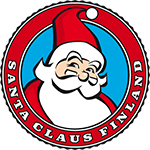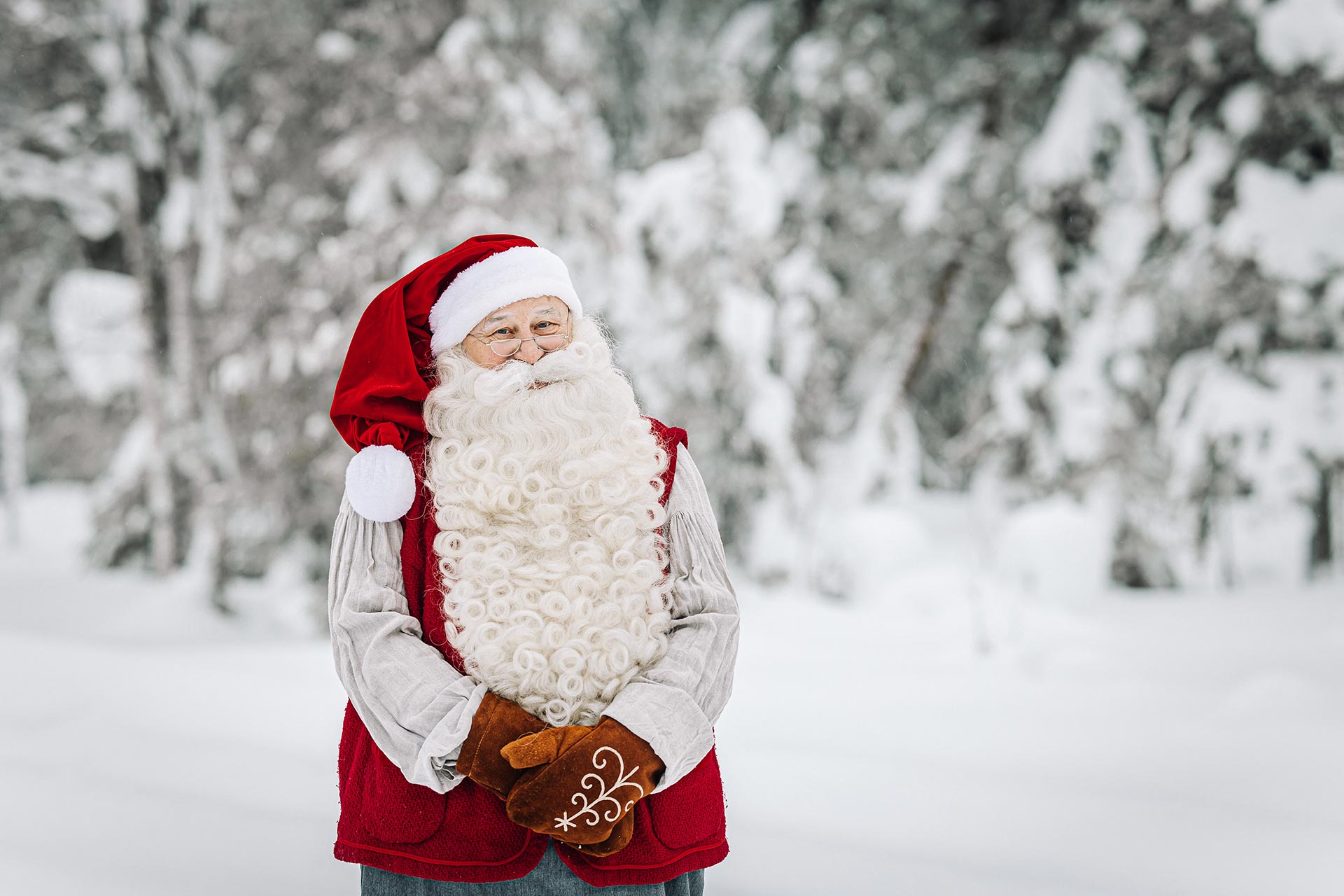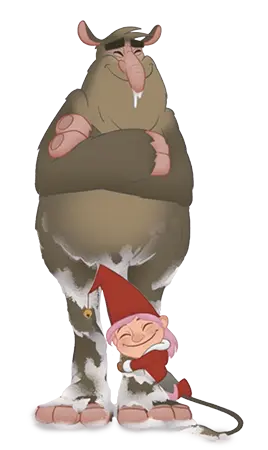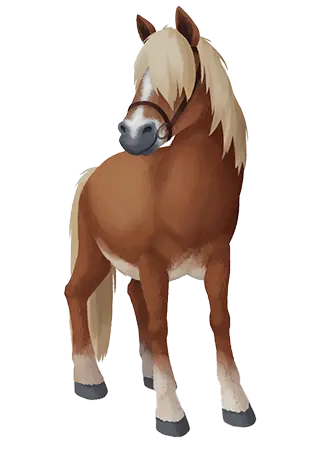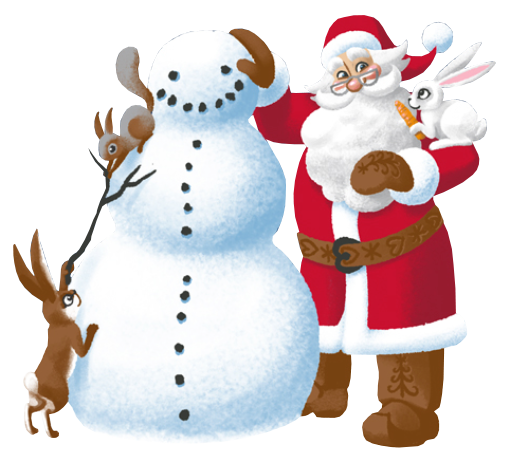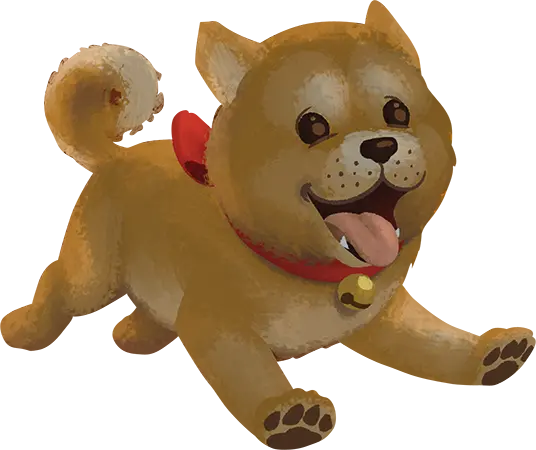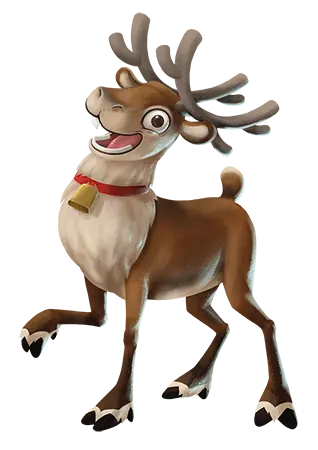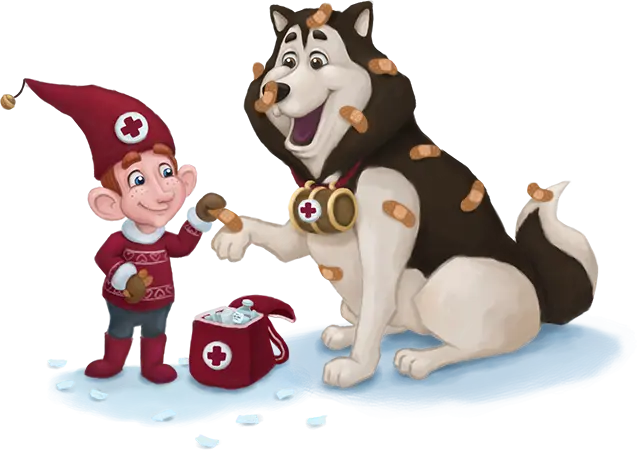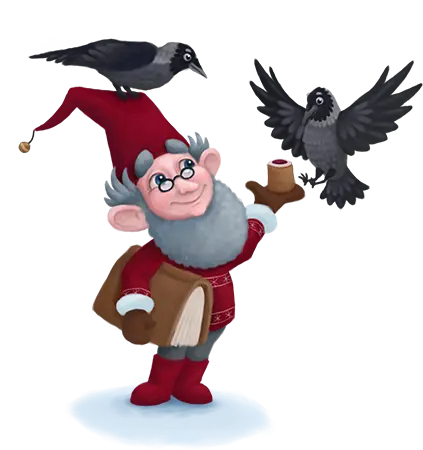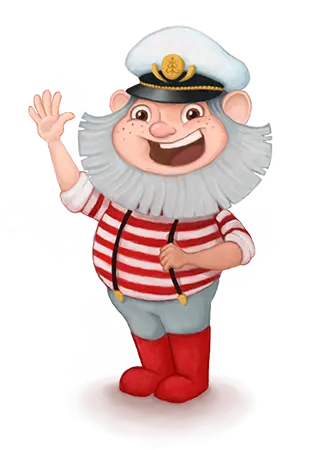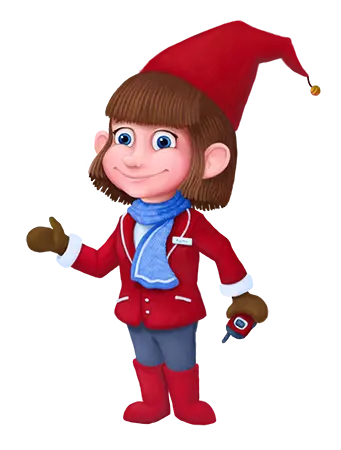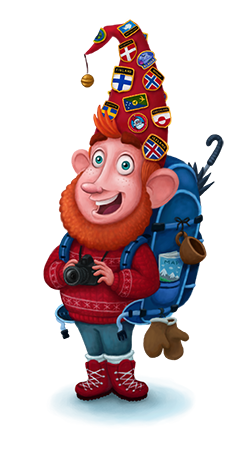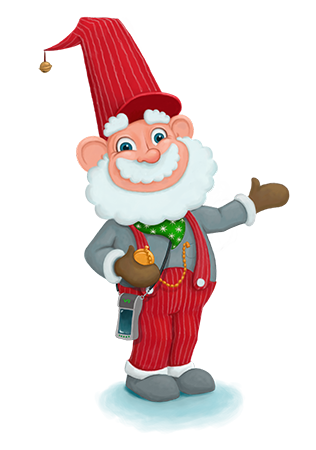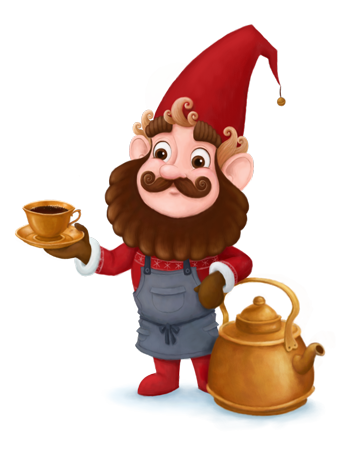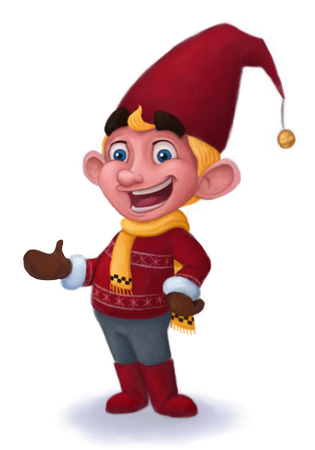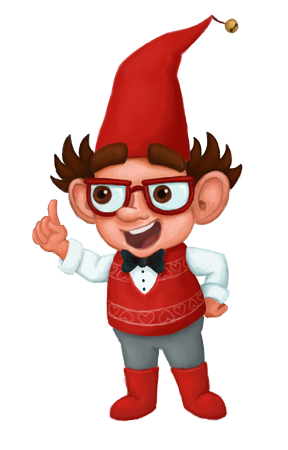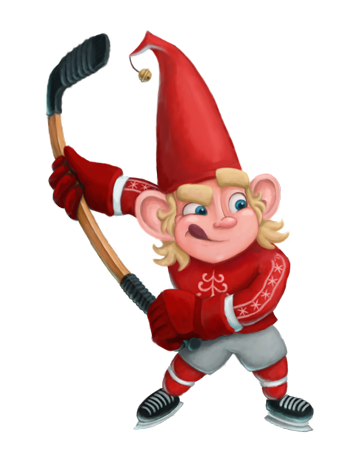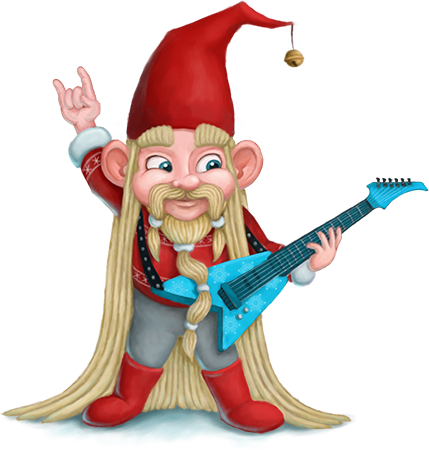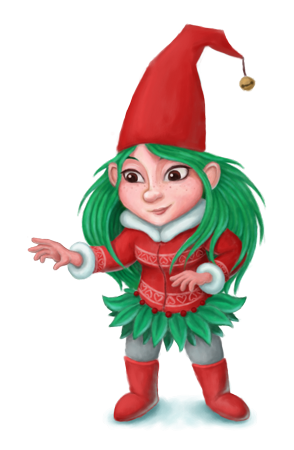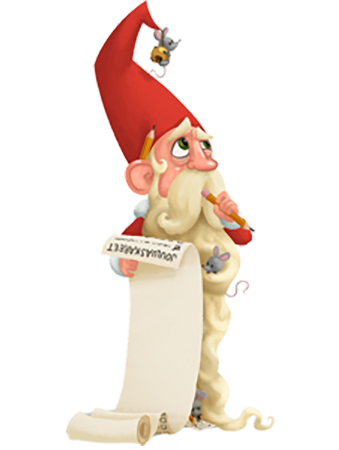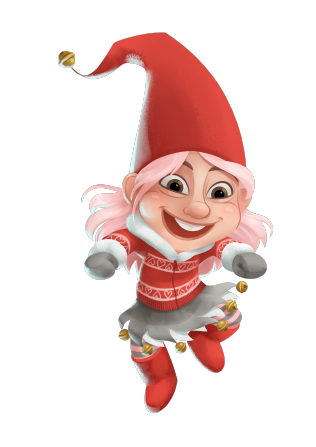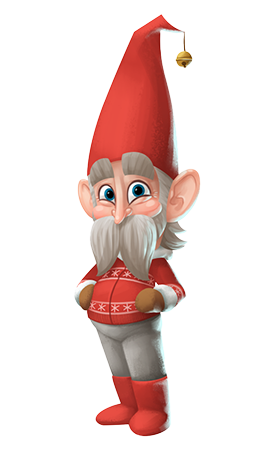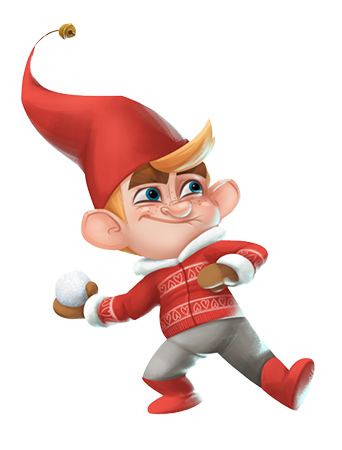For children, and why not for parents too, the gifts they receive and give at Christmas are an essential part of the Finnish Christmas experience. Of course, hard and soft packages were of interest and decades ago, joy could be found in an apple and gingerbread. In my memories, the emphasis is on homemade gifts, especially in the 1940s and for a couple of decades afterwards. The reason is clear: money was tight and people made their own gifts rather than buying them. To some extent, new Christmas gift trends have also come to us from around the world, such as intangible gifts, where a gift can be a donation to a good cause. A popular gift or remembrance among young adults is the provision of a service; cleaning, washing windows or taking an elderly person out of their home or on a shopping trip. The only limit to what you can give as a Christmas gift is your imagination.
A homemade gift was more the rule than the exception
Even though our home was poor, Santa Claus visited us every Christmas and we received small presents. As our older siblings grew up and worked, they were able to cook something nice for their little sisters, the post war period was still a time of scarcity, as the youngest I waited with one eye wide open for my coveted very own skis, I knew I would get them after Anni had hers. I learned to read before school age, I can't remember when, I wasn't taught, I listened to my sisters read and looked at their books, Ann and I usually got the book that was our greatest wish, a plate with a picture of Snow White or Mickey Mouse, a stamp album etc. One Christmas, when I was already at school, one of my older sisters had made Ann and I beautiful fur coats. We both had a white rabbit as a pet, which lived in a hutch outside. One morning we were met with a sad sight, our pet had been mauled and killed by a fox or loose dog. From their skins, blue blood and mountain fabric, our sister, a modiste, had made lovely fur coats which were the envy of the girls next door. My father didn't usually buy Christmas presents, that was my mother's business, but, I think I was 12, my father, who sewed wooden dolls and leather gloves, had made me beautiful, long-stemmed gloves from some soft leather, and sewed decorative patterns on the wide stems. That Christmas, my mother, who made knitting needle looms with a wide bone needle from thick woollen yarn, had knitted me wonderfully soft woollen needle looms from white woollen yarn, the arms of which she had decorated with different coloured threads and tassels. That autumn I had started secondary school in Ylitornio, 15 km away, and travelled to school by bicycle (15+15=30km), milk truck, freight train. For the winter heart, my father bought a card from the church village. The winter was very cold. Gloves and rims were needed.
Toini Marjamaa, Lautiosaari, Keminmaa
Apple and gingerbread
At the Christmas party at the primary school, gifts were given to all the children. In the early 1950s, life was still so poor that a small paper bag felt very important, even if it only contained an apple and a couple of gingerbread cookies. Apples were a great delicacy in winter, as the domestic harvest was almost all eaten by autumn and no fruit was imported from abroad. I can't remember how this gift was given, whether there was a Santa Claus at the party or whether the teacher just handed out bags to everyone. Apparently there was no Santa Claus.
Anneli Mäkelä-Alitalo, Helsinki
Wartime Christmas presents
During the war, I don't remember Santa Claus visiting us. Then, after peace came, presents appeared on Christmas Eve and it was said that Santa Claus brought them. It was only in the first grade of primary school that I remember that at the school Christmas party in Kangasniemi, a man in a red coat with a white beard and a walking stick was stalking into the classroom. I think Santa Claus gave each child an apple, a bun and a biscuit as a Christmas present. "Santa needs to be sung to," said the teacher. We little bright-eyed ones did sing, since we couldn't count or read everything. At home that Christmas, I got new trousers made of old cloth, taylor made. My father went to the tailor's on New Year's Eve to pay for them. He gave five hundred marks and got two hundred and fifty marks back. The same night the money was halved in value, so the tailor made no money from making those trousers.
Risto Nihtilä
The Christmases of my childhood are set in the war years. Santa's gift baskets were scarce and often contained old, ”refurbished” or even old stuff. It is said that one boy threw his presents at Santa and shouted: you Santa Claus, you brought old knickknacks.
Hellin Torkki, Jyväskylä
Gifts in a basket
Santa's absence from our family Christmas did not affect my Christmas mood in any way, at least not negatively. The most fun was really just getting the presents and getting to open them. I also found it particularly fun and exciting to be able to hand out presents to everyone from under the tree, from a shingle basket or from a big box where the ”elves” had put them. I've noticed that the next generation of children and even the generation after that, which I've seen on Christmas Eve the last couple of Christmases, are just as excited to be able to hand out presents themselves. I think the thing that fascinates almost all children about giving is the thrill of picking up another and another package and not knowing if it's already addressed to the person giving it to them, or the next one, etc. I don't know about the adults, but I have to admit that I would still love to give presents myself. (In my house, a hamper was used to carry laundry, for example. The basket was at least a metre long, maybe 20-30 cm high and had buckets at the ends.
Helena Lavonen, Mikkeli
Skis are a Christmas favourite
I don't remember much about presents: no dolls or books, but new clothes always came. We were growing and consuming, so clothes were always necessary. I don't remember getting cuddly toys either. New skis and sledges were a memory, and I would have been keen to try them out as soon as the stars came out. The skis included new shoemaker's shovel-tipped paddles. The skis had no bindings, but toes into which the tips of the shovel were inserted. There was little in the way of shop-bought goods, there wasn't much on offer, but there was no money either. My mother, who lived and worked in a church village, was a clever craftswoman, fetching and making presents for us girls and for the people in her household. Sometimes my mother and father would join us for Christmas. They didn't come for Christmas 1947, though, because their sixth son had been born as a ”Christmas present” on the very day of Thomas.
Tuula Hyyrö
Dear Christmas dolls
The arrival of Santa Claus was the most anticipated moment of the evening. Santa would visit your home or grandmother's house, knock on the door and bang in with a stick in his long, I remember grey coat. It was exciting. Santa would hand out presents from his sack or basket to each person by name, if he could read on the package who it was for. If necessary, the more discerning ones helped Santa to find out. Santa didn't have long to stay, as he had to rush off to another place. The most popular gift was a big doll with its eyes closed when lying down. The doll was named Anu after my cousin, who was a baby at the time. I wrapped the doll in a warm blanket and took her with me to the grandmother's house, where we would walk along the forest road on a kick-scooter. That Anu doll is still there, and cousin Anu is now a mother and grandmother of four grown-up children, just like me. And so time and the years have passed. I also have a plastic candle lantern from Santa's presents, which I remember receiving through my now deceased Aunt Sylvi. Sylvi's grandchildren are in Sweden and England. I don't know how Santa Claus from Korvatunturi will get there this year, with Brexit on top of the crown.
Paula Karvonen
The best gift was the presence of a father
I'm a child of the war era, who of course remembers nothing of the first Christmas. I was born in 1937 and my first memories of Christmas are from the Continuation War. My father was not part of our Christmas celebrations very often. I remember one Christmas when my father came home unexpectedly. Santa Claus came to our house, and he was about as tall as my father, at least six feet tall. The best Christmas present was, of course, the presence of Dad.
The gifts were simple and homemade: socks, mittens, scarves, hats and other crafts. Even the yarns were from my own sheep and spun by my mother. There was little to buy in the shops and of course there was little money. Before Christmas, I put my old doll in a branch of an apple tree so that the elves could take it away to be repaired. On Christmas Eve, Santa Claus brought it back. He had been given some nice clothes and a new head, or at least a new face. You could buy them in the shops at the time. Sometimes we also took other things to the apple tree in the hope that Santa would repair it or bring back a new one. I remember that even during the war, Santa Claus came every Christmas, however scarce it was. It was a joyous experience.
Eila Patjas
The above stories have been obtained from the Finnish Literature Society's archive and the Santa Claus Foundation's joint heritage collection 2020-21.The story collections have been edited by Ollijuhani Auvinen. The Joulupukkisäätiö was established in 2000 and its mission is to promote the Finnish Santa Claus worldwide. The Foundation collects traditional material related to the Finnish Santa Claus. The Finnish tradition of Santa Claus is also inscribed on the National Inventory of Living Heritage under the UNESCO Cultural Heritage Convention.
The borrowing of traditional inscriptions is only allowed with the permission of the Santa Claus Foundation. The email address of the Foundation is [email protected] . You can also send your own Santa memories to the email address to be stored for researchers to use.
